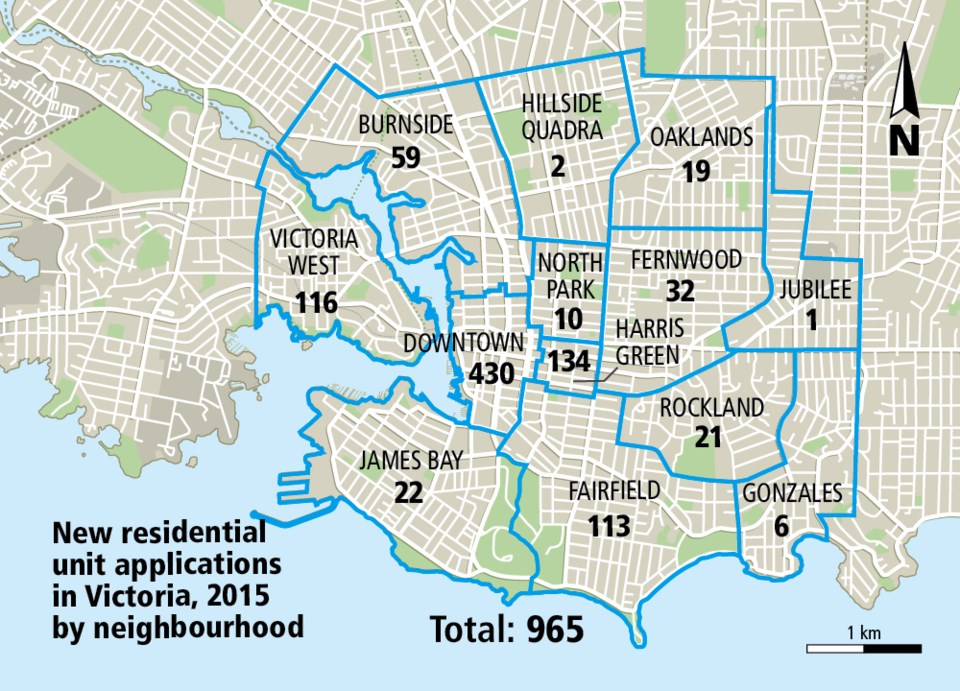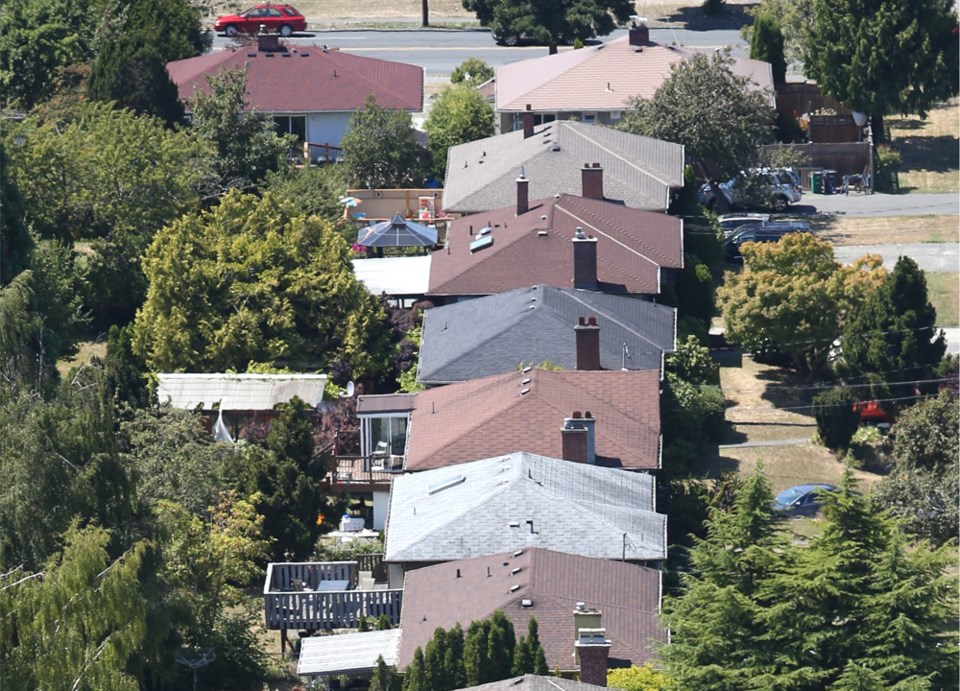Victoria saw a record number of new housing-unit applications last year, with more than half of them for new rental units.
But it could be years before the applications give relief from the city’s low rental-vacancy rate.
Applications were made to build a net of 965 new residential units in Victoria in 2015, the highest number of rental units and the highest number of downtown units applied for in one year since the Official Community Plan was adopted in 2012, say city staff.
That figure represents the net number of units after units lost through demolition or alteration are subtracted.
At the same time, the rental vacancy rate dropped to 0.6 per cent in 2015 from 1.3 per cent in 2014 — far lower than the two to three per cent vacancy rate considered balanced and the lowest since the Official Community Plan was adopted.
City staff say the rental vacancy rate may improve because several large rental projects were applied for in 2015.
The low vacancy rate may be “a temporary decrease” and it is too early to say if it is a trend, staff say.
Coun. Chris Coleman said because the numbers reported are applications for units not yet built, it will be some time before they have any impact on the vacancy rate.
“There’s a two- to sometimes three-year gap between coming in and saying: ‘I want to do this,’ and it actually being completed,” Coleman said.
“So while we say we’ve got fairly big numbers in terms of rental housing stock, very little of that is actually on the ground at the moment, which is why the vacancy rate is still going down.”
The 965-unit total represents nearly twice the average gain since 2006 and the largest number of new housing units applied for in more than a decade, according to the annual Official Community Plan review.
The largest number of units applied for was downtown, followed by Harris Green and Vic West.
The report says 60 units were lost due to demolition or alteration in 2015, with Fairfield seeing the largest number lost at 13, followed by Fernwood at 10. Most of those represented permits for demolition of detached dwellings.
Of the 1,025 gross new units that were applied for last year, 55 per cent were identified as rental units, 42 per cent as strata units and three per cent as fee-simple-owned units.
Victoria’s regional share of new housing applications has also exceeded targets since 2012, city staff say, at 51 per cent.
The report says that the city-wide industrial vacancy rate increased to 3.8 per cent from 3.4 per cent — a five-year high — while downtown office vacancy rates decreased to 7.9 per cent from 8.6 per cent — nearly a five-year low.
The city-wide shopping-centre vacancy rate increased to 6.1 per cent from 4.9 per cent in 2014 — the highest since the Official Community Plan was adopted.
The downtown streetfront vacancy rate decreased to 8.5 per cent in 2015 from a five-year high of 10.2 per cent in 2014, which staff say is closer to the average vacancy rate for the previous two years.
Mayor Lisa Helps said the downtown storefront vacancy-rate change is good news.
“The narrative has been everyone is moving to shopping centres, everyone is moving to Uptown and downtown is dying. That’s been the narrative for the past two years. I heard it really loud and clear on the campaign trail,” Helps said.
“I think these numbers show that in fact, that it’s the opposite. It’s just the beginning and I think next year, hopefully, we’ll see a lower retail vacancy rate downtown and lower shopping-centre vacancies as well.”
Director of sustainable planning Jonathan Tinney said the biggest factor affecting downtown retail vacancies is probably the strong American dollar bringing an increased number of tourists.
“That’s certainly supporting increased retail spending, specifically in the downtown core. The vacancy rate is one indicator and it references a level of activity, but also references a level of supply. So as new supply comes on, that ultimately has an impact on vacancy rates,” Tinney said.
“We certainly see that in the office market as well. The expectation is that in the next year or two, the office vacancy rate probably will go up significantly, given the new office space that will come on with the two Jawl properties at Capital Park and across the street here [from city hall].”
Staff also say the number of permits issued for activities in public spaces such as markets, vendors and festivals has increased every year since 2012, indicating greater vibrancy.




